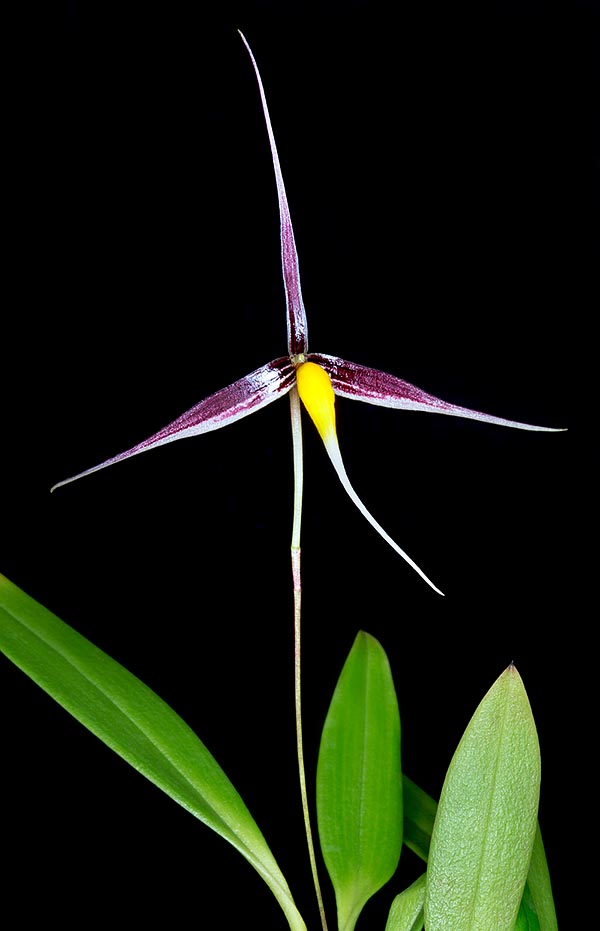Family : Orchidaceae

Text © Pietro Puccio

English translation by Mario Beltramini

New Guinea epiphyte easy to cultivate, the Bulbophyllum speciosum should deserve a better horticultural diffusion. The leaves reach the 16 cm and the flowers the diameter of 7-8 cm © Giuseppe Mazza
The name of the genus is the combination of the Greek substantives “βολβός” (bolbos) = bulb and “φύλλον” (phyllon) = leaf, with reference to the leaves growing at the apex of the pseudobulbs; the specific name is the Latin adjective “speciosus, a, um” = beautiful, with obvious reference.
The Bulbophyllum speciosum Schltr. (1912) is an epiphytic species with creeping rhizome, rooting at the nodes with filiform roots, and pseudobulbs, spaced of about 2 cm, conical-cylindrical, 2-3 cm tall and of 0,4-0,6 cm of diameter, provided at the apex of only one elliptical leaf with obtuse or acute apex, 10-16 cm long and 1,2-1,8 cm broad, of intense green colour and rather thin.
Inflorescence from the base of the pseudobulbs, on a 7-9 cm long filiform peduncle, erect or ascending, bearing one single flower, of 7-8 cm of diameter, with white sepals thickly dotted of dark purple and yellow labellum; ovary and pedicel 2-3,5 cm long. Lanceolate sepals with long pointed apex, the dorsal being 2,5-3,5 cm long, the lateral ones 3,5-4 cm long and 0,4 cm broad at the base, falcate petals with apiculate apex, 0,2 cm long, lanceolate labellum with long pointed apex, convex, wrinkled, 3-8 cm long and 0,6 cm broad, and about 2 mm long column.
It reproduces by seed, in vitro, and at amateur level by division, with each section provided of at least 3-4 pseudobulbs.
Species with star-shaped flowers that should deserve a better diffusion among the passionate orchidophils, of easy cultivation, requires a semi-shaded and aerated position, medium-high temperatures, 20-30 °C, with lowest values not under the 15 °C, and high atmospheric humidity, 75-90%. Regular and abundant waterings and nebulizations during the growth period, slightly more spaced during the vegetative rest, and monthly fertilizations with a hydrosoluble balanced product, with microelements, at 1/5 the dosage written on the package. It can be cultivated in pots or in baskets with a compost based with medium sliced bark fragments and sphagnum or mounted on logs or rafts covered by sphagnum in order to maintain the humidity. Repottings and possible divisions are to be done, when strictly necessary, at the vegetative restart.
The species is reported in the appendix II of CITES (species whose trade is internationally ruled).
Synonyms: Bulbophyllum scitulum Ridl. (1916); Hapalochilus scitulus (Ridl.) Garay & W.Kittr. (1986); Hapalochilus speciosus (Schltr.) Garay & W.Kittr. (1986).
→ For general notions about ORCHIDACEAE please click here.
